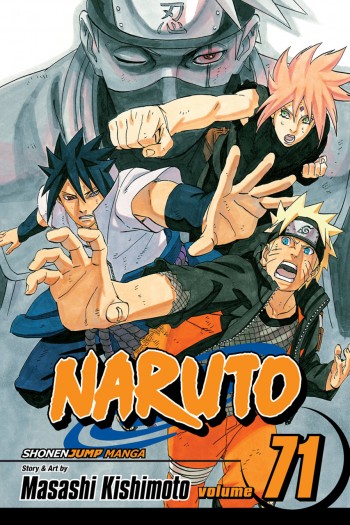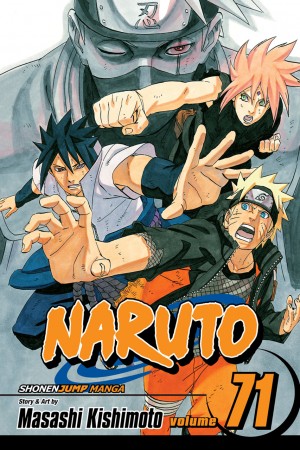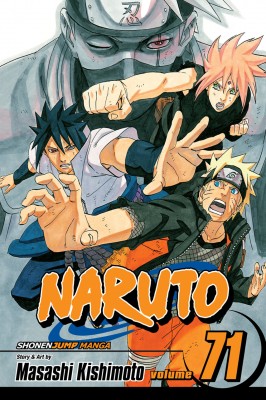
MANGA REVIEW: Naruto, Vol. #71: I Love You Guys
Raves
Rants
ALMOST THE END! Naruto, Vol. #71: I Love You Guys was originally previewed as the supposed “last” Naruto story until I found out the bitter way, it’s the second-to-the-last or the penultimate one until its publisher, Shonen Jump, releases the last one. I admittedly felt a little disappointed since my expectations were then high due to […]
ALMOST THE END!
Naruto, Vol. #71: I Love You Guys was originally previewed as the supposed “last” Naruto story until I found out the bitter way, it’s the second-to-the-last or the penultimate one until its publisher, Shonen Jump, releases the last one. I admittedly felt a little disappointed since my expectations were then high due to its hype and naturally, a sense of closure for me since Naruto as a whole is the longest manga series I ever take interest (and passion) since the early 2000s. But, upon reflecting myself and contemplating the possible forces behind this uncanny moment, I try to think that probably it is best to enjoy the merits inside this latest volume and judge it accordingly. Naturally, I read already the online version last year and acknowledged the fact that the former’s translation version is obviously different in tone and cadence than the official English translation presented in this volume. But what are more paramount here is the maintenance of essence and the retention of the overall message convey this volume brings in, which I say very interesting and even more refreshing, especially when rereading the parts that really makes sense why the Naruto-verse existed and evolved in the first place.
Volume 71 comprises of eleven (11) chapters, or numbers 680 to 690 of the on-going Naruto series. Basically, this chronicles the heat of the continuing Fourth Shinobi (or Ninja) War that sees the climatic confrontations of Kaguya, the root of the chakra as fans know it so well, and the combined remaining forces led by the fully-powered and evolved Uzumaki Naruto and Uchiha Sasuke. Despite the intensity of the battle from the first pages up to the last, dialogues litter most of these panels, particularly by another antagonist, Black Zetsu, Kaguya’s youngest “son” and the brainchild of all what happened in the ninja world since his mother’s first fall by the first recipients of her chakra, her first-born twin. Speaking of the villain, it is interesting to note how the written histories or the grand narratives of the ninja history in Naruto series changes from one volume to another, and finally in this latest installment, by this double-crossing and manipulative shinobi. In credit with the series creator, Masashi Kishimoto, the verbosity of some dialogues is well-placed when the actions start to intensify or the brief moments to strategize or resting. The pacing is well-done that the momentum of the narrative shifts from one gear to another higher level and smoothly goes back whenever the plot or action demands so.
Another surprising elements in this volume are the redemption of long-time antagonist who was another benefactor of the main protagonist’s brand of positivity and optimistic (if not brash nor cocky) attitude, and the unexpected power-up by the great ninja imitator whose ocular powers intensified to greater heights and resulted to the presentation of the ultimate manifestation of the samurai-like Japanese mythological-inspired giant slayer which is surely aesthetically more pleasing than any Uchiha-powered ocular users. These uncanny sets of events are few of the beauties of reading this postmodern take of anything shinobi—the unpredictability of the supporting characters that ultimately make a strong difference or two to the outcome of the current conflicts. Obviously, women play significant roles here, though Kaguya’s trajectory gears against the concept of matriarchy since she was the core and the mother of just everything what is a ninja should be in the said universe (and even arguably, the originator of malevolence since she is portrayed as selfish and despises her first born twin, and she bore out Black Zetsu after all). Sakura plays a minor but has strong and significant game-changing part that shows how important women contribute to the overall results in the supposed world of masculinity (actually, all genders contemplate one another, consciously or otherwise).
Art-wise, it continues to remain the same since the beginning of the Shippuden years (Volume 49). Jump-packed action scenes are virtually well-choreographed despite some of the out-of-this-universe angular perspectives for maximum effects, particularly Naruto’s shadow clone scenes. However, there are no colored pages in this volume, which is a negative for me, but the drama and action scenes are worth the trouble of reading and appreciating the visuals, to say the least.
Another thing worth mentioning here is the existence of ex machina trope in the narrative that I believe lessens the impact of the general quality of the storytelling in the current Naruto franchise, most especially when both Sasuke and Naruto met the Sage of the Six Paths, the father of ninjutsu of the Naruto universe (as shown in the previous volume, and emphasized a bit in this one further). The Sage is considered as a divine being in the loosest sense, and by his intervention in the heat of the moments, most specifically when the stakes are virtually down and the hopes are almost erased, illustrates the cliché on the part of the series creator. Sure, I enjoyed the back stories and hidden histories of the Shinobi world, starting with Uchiha Itachi’s revelations up to Uchiha Obito’s lies (plus, Uzumaki Kushina’s true history to Naruto). But the concept of ex machina is an easy way out of loosening difficult and/or convoluted parts of the already complicated narrative that is the Naruto series. Since the victory of the protagonist against Pain and his early forays in the last Ninja Wars, the narrative flow looks so redundant, if not lazily, executed, which should have avoided but inevitably otherwise.
Until the last volume will be released, Volume 71 is the conclusion of the Fourth Shinobi War, and some closures for some characters as well. Unless you want to ride further for the rematch of two polarized ninjas (personally, the first match is more memorable than that one, but again, sentimentality reigns for me), this volume is as climatic as it gets. Closures and historical information about the ninja universe are tied-in and resolved nicely though certainly, hiccups are ever present still. An enjoyable read, though I expected really a full-closure. Go onward to the grand finale (but anti-climatic).














